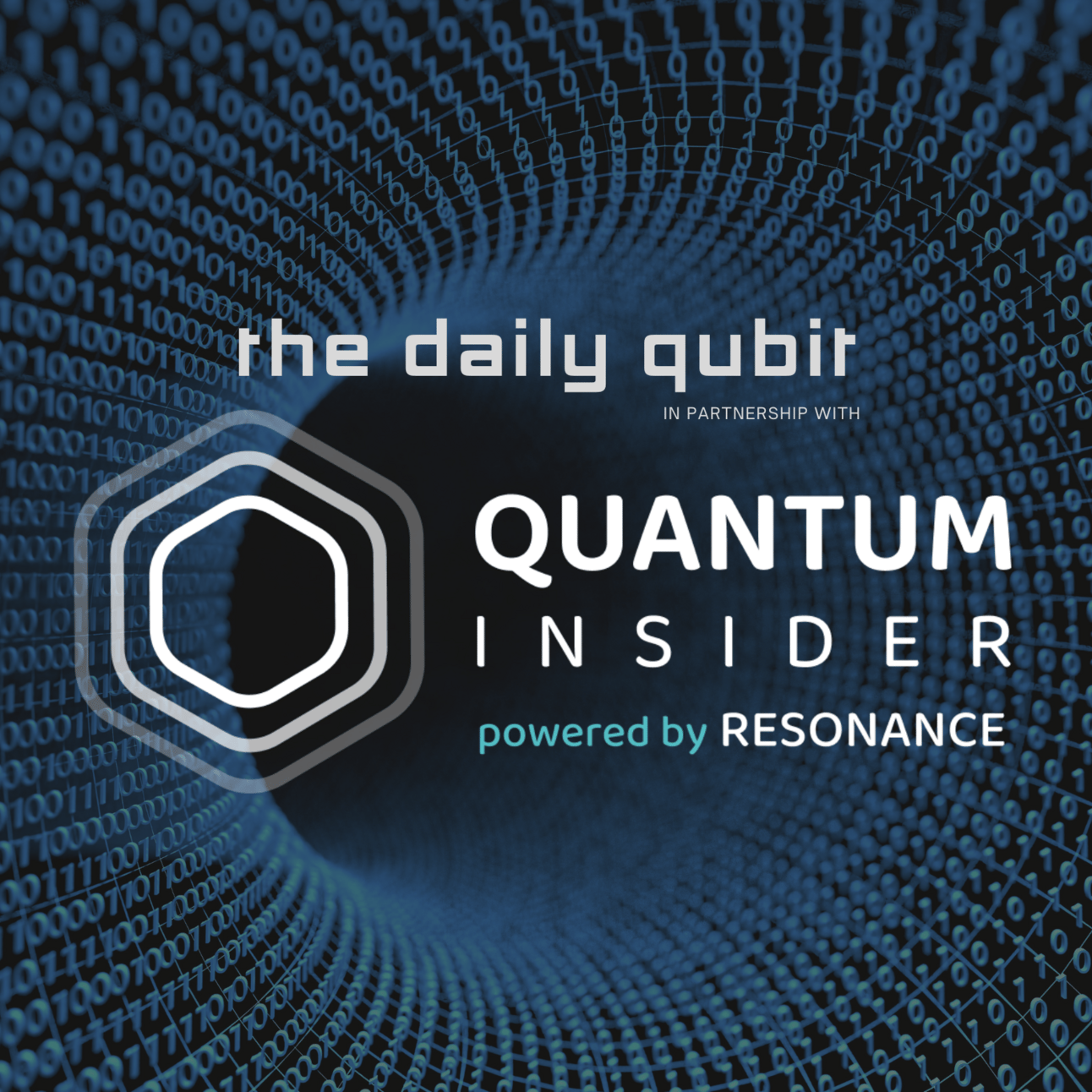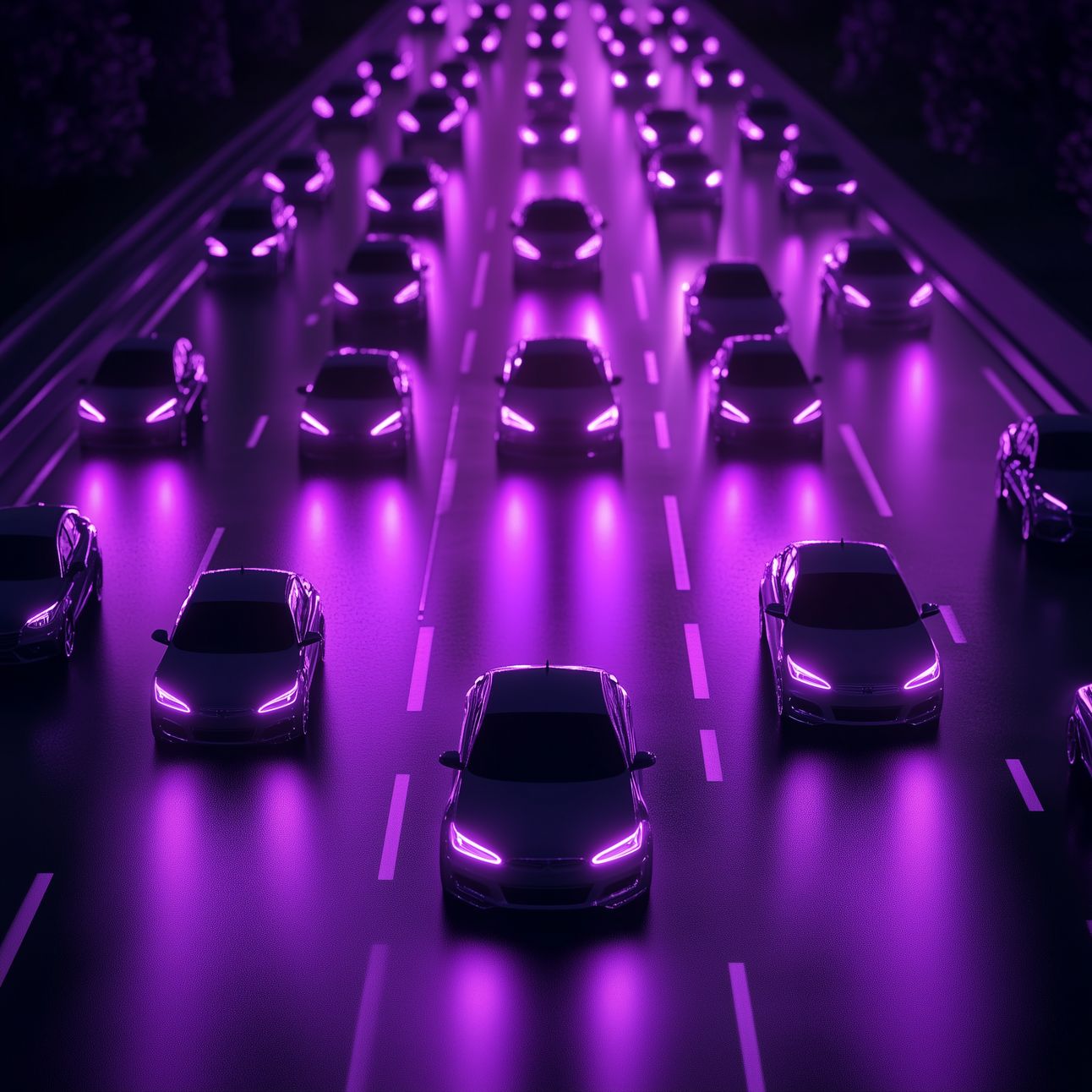- The Daily Qubit
- Posts
- The Daily Qubit
The Daily Qubit
🚀 Quantum computers simulate black hole entanglement dynamics, a trapped-ion quantum simulator explores electron transfer dynamics, a QNN is tailored for vehicle road cooperation systems, and more.

Welcome to The Daily Qubit!
Get the latest in top quantum news and research Monday through Friday, summarized for quick reading so you stay informed without missing a qubit.
Have questions, feedback, or ideas? Fill out the survey at the end of the issue or email me directly at [email protected].
And remember—friends don’t let friends miss out on the quantum era. If you enjoy The Daily Qubit, pass it along to others who’d appreciate it too.
Happy reading and onward!
Cierra
Today’s issue includes:
Quantum computers are used to simulate the entanglement dynamics of black holes.
A trapped-ion quantum simulator explores electron transfer dynamics, a fundamental process in chemical and biological systems.
A quantum neural network is tailored for vehicle road cooperation systems to manage traffic flow by enabling dynamic interactions between vehicles and road infrastructure.
QUANTUM APPLICATION HEADLINES

Image: by Midjourney for The Daily Qubit
APPLICATION: Researchers from the University of Dhaka, Brookhaven National Laboratory, and other institutions used quantum computers to simulate the entanglement dynamics of black holes. By modeling black hole evaporation as a process involving qubits, they investigated the evolution of entanglement entropy—a key measure of quantum information spread.
SIGNIFICANCE: The Page curve is essential for understanding the black hole information paradox, a fundamental question in physics that seeks to explain how information escapes from black holes without violating quantum mechanics. The paradox arises because classical physics predicts that information is irretrievably lost in black holes, conflicting with quantum theory, which requires information conservation. This study addresses the paradox by simulating black holes using a simplified "qubit transport model," where black holes and their emitted radiation are represented by entangled qubits. The research explores how entanglement evolves as a black hole evaporates, focusing on the point known as the "Page time," when the entanglement entropy reaches its maximum before declining. This decline suggests that information begins to leak out via Hawking radiation. The work also demonstrates the power of quantum computers as experimental tools to probe questions at the intersection of quantum mechanics and general relativity, fields that remain difficult to unify.
HOW: The researchers used a qubit transport model to mimic black hole evaporation, where qubits represent the information stored in black holes and the emitted Hawking radiation. They used random unitary circuits, mathematical models that generate entanglement by scrambling qubits, to simulate the chaotic behavior inside black holes. To measure entanglement entropy, they employed two methods. The first, the swap-based many-body interference protocol, calculates entropy by swapping qubits between systems and measuring the resulting changes. The second, the randomized measurement protocol, estimates entropy by analyzing statistical correlations between measurement outcomes from randomized quantum operations. Both methods were tested on IBM quantum devices, with error mitigation techniques employed to counteract the noise inherent in current quantum hardware. These efforts allowed the team to reconstruct the Page curve and study the flow of information from black holes.
BY THE NUMBERS:
4 to 8 layers — Random unitary circuits were built with 4 to 8 brickwall layers to simulate entanglement evolution effectively.
156 qubits — The IBM Marrakesh quantum computer used for these simulations has a total of 156 qubits, supporting complex experimental setups.
10⁵ shots — Each entropy measurement protocol required up to 100,000 quantum circuit executions to mitigate noise and achieve reliable results.

Image: by Midjourney for The Daily Qubit
APPLICATION: Researchers from Rice University have developed a trapped-ion quantum simulator to explore electron transfer dynamics, a fundamental process in chemical and biological systems.
SIGNIFICANCE: Electron transfer processes, essential in both natural and engineered systems, occur when electrons move between molecular donor and acceptor states. Understanding ET dynamics is relevant for innovations in renewable energy and molecular electronics. Simulating these dynamics is challenging due to the interplay of quantum mechanical effects and the vast number of interacting molecular components. The trapped-ion system leverages quantum control to replicate these interactions, offering insights into regimes inaccessible to classical simulations. Using a spin-boson model, this experiment sheds light on phenomena like vibrationally assisted electron transfer, which plays a role in biological processes such as DNA charge transport and energy flow in photosynthesis.
HOW: The quantum simulator uses a combination of ground-state and optical qubits in a multispecies ion crystal. The spin-boson model, which describes electron donor and acceptor states coupled to vibrational modes, is implemented via a Hamiltonian that incorporates spin, motion, and bath interactions. The system uses sympathetic cooling of ions to emulate a tunable dissipative environment, recreating electron transfer dynamics in both nonadiabatic (incoherent) and adiabatic (coherent) regimes. Laser pulses and Raman transitions are applied to control the system's parameters, enabling real-time measurements of donor-acceptor population dynamics and transfer rates.
BY THE NUMBERS
3.2 MHz — The frequency of the bosonic tilt mode, representing vibrational dynamics in the spin-boson model.
500 Hz — The tunable dissipation rate, allowing simulation of various environmental interactions.
0.1 to 0.3 phonons — Average initial thermal population, reflecting the low-temperature conditions typical of quantum tunneling regimes.
1.4ω — Spin-boson coupling strength, necessary for observing vibrationally assisted transfer.

Image: by Midjourney for The Daily Qubit
APPLICATION: Researchers from institutions including Hassan II University, Hamad Bin Khalifa University, and South Valley University have developed a quantum neural network tailored for vehicle road cooperation systems, which manage traffic flow by enabling dynamic interactions between vehicles and road infrastructure.
SIGNIFICANCE: Urban transportation faces growing challenges due to increasing vehicle numbers, diverse commuting patterns, and the need for real-time traffic management. Traditional computational approaches struggle to process the immense data generated by these systems. VRCS, a central component of smart city development, requires tools to address this complexity. By using QNNs, researchers may have found a way to cultivate more efficient and accurate traffic management, especially in autonomous vehicle systems. Quantum encodings like FRQI and NEQR enable these networks to process visual data with fewer resources, making them well-suited for noisy environments.
HOW: The research uses a quantum neural network framework with angle encoding to classify traffic light images. Datasets are preprocessed to scale pixel data and encode it into quantum states using FRQI and NEQR methods. Quantum circuits with UU† and variational UU† algorithms simulate the classification process, while QNNs apply variational quantum circuits for training. The QNN uses rotation gates and entanglement layers to improve prediction accuracy, iteratively refining parameters with hybrid classical-quantum optimization. Experiments across datasets and noise conditions validate the model’s robustness, showing superior accuracy in scenarios with diverse traffic light images and environmental challenges.
BY THE NUMBERS:
97.42% accuracy — Achieved by the QNN on the Carla dataset with 2x2 image inputs, outperforming classical CNN models.
84.08% accuracy — Achieved on the cropped Lisa dataset, demonstrating the QNN’s ability to handle real-world traffic scenarios.
6 noise models — Tested for robustness, including bitflip, depolarizing, and amplitude damping, confirming the model’s stability in varied conditions.
20 layers — Optimal QNN depth required for maximum accuracy, highlighting the model’s scalability and efficiency in complex tasks.
Writer RAG tool: build production-ready RAG apps in minutes
RAG in just a few lines of code? We’ve launched a predefined RAG tool on our developer platform, making it easy to bring your data into a Knowledge Graph and interact with it with AI. With a single API call, writer LLMs will intelligently call the RAG tool to chat with your data.
Integrated into Writer’s full-stack platform, it eliminates the need for complex vendor RAG setups, making it quick to build scalable, highly accurate AI workflows just by passing a graph ID of your data as a parameter to your RAG tool.
NEWS QUICK BYTES
🔒️ Nokia and Turkcell have completed a first-of-its-kind demonstration of quantum-safe IPsec cryptography for mobile subscribers, protecting communications against potential quantum-era threats. By integrating quantum-safe encryption at the network layer with Nokia’s IPsec Security Gateway, they proactively address the vulnerabilities of traditional cryptography.
🤝 The Jülich Research Center has partnered with ARQUE Systems to integrate a 5-qubit semiconductor-based quantum computer into the JUNIQ platform, with plans to scale up to hundreds or even millions of qubits. ARQUE’s patented architecture moves single-electron qubits along shuttle paths within transistor-like structures, enabling compact integration of qubits and classical control electronics.
QUANTUM MEDIA
WATCH
THAT’S A WRAP.
How many qubits was today's newsletter? |


